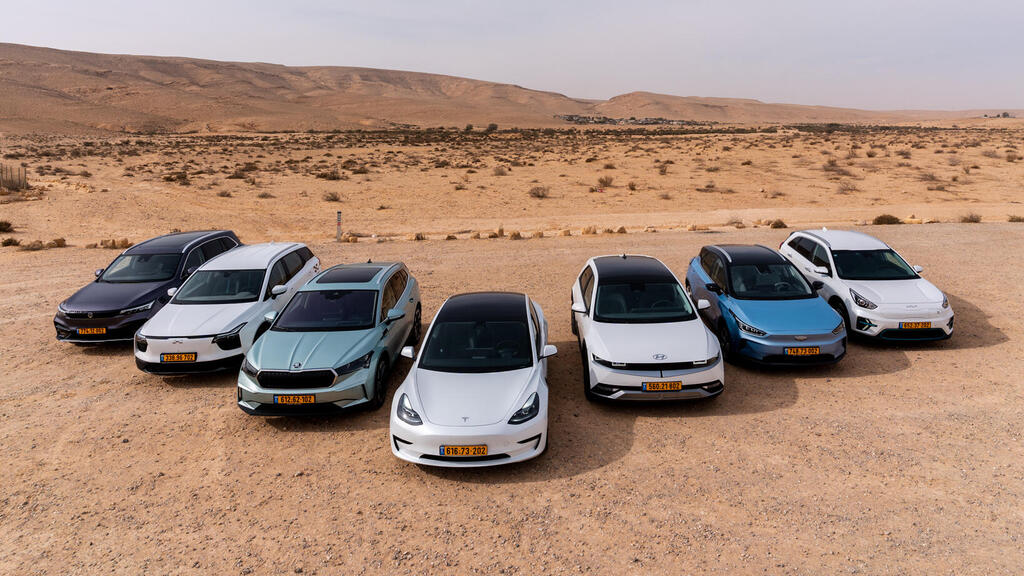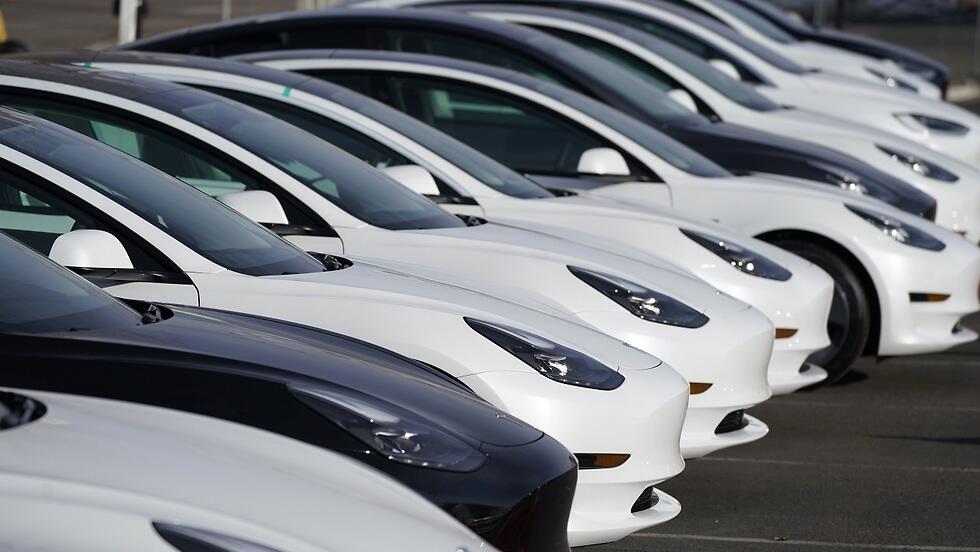Getting your Trinity Audio player ready...
In recent days, electric car owners are grappling with an issue that is being discussed widely in social media circles: the outside temperature is rising to uncomfortable levels, causing a significant decrease in driving range per charge. According to some reports, the driving range drops to half of what the manufacturer promised – a seemingly illogical situation.
Read more:
In the past weeks, CTech, Ynet's tech and startup outlet examined the driving ranges of several electric cars and, in most cases, discovered that when the external temperature exceeds 35°C (95°F), the driving range notably decreases, up to 30%.
2 View gallery


The outside temperature is rising to uncomfortable levels, causing a significant decrease in driving range per charge in electric vehicles
(Photo: Omri Mesika)
This week, in certain places in Israel, the temperature is expected to reach 40°C (104°F), and the somewhat embarrassing solutions offered to electric car owners by importers involve crawling at 90 km/h(56 mph) on highways – which doesn't seem reasonable. In recent days, anyone who was driving around Israel, couldn't help but notice that quite a few electric cars were traveling at speeds of 90-100 km/h, while the rest of the traffic was moving at 120 km/h (75 mph).
Why do electric vehicles respond differently to heat, especially extreme heat conditions? Recently, the Recurrent website, specializing in the trade of used electric cars, examined models available in the United States and discovered that the driving range under conditions defined as "extreme heat" by Americans (around 40°C and above) decreases by up to 31% depending on the type of vehicle. However, in the U.S., they haven't tested many Chinese electric car models that are sold in Israel.
Let's delve into the reasons for this decline in range per charge: In a combustion engine vehicle, the way energy is utilized differs significantly from that of an electric car due to the manner in which heat energy is managed – since the energy generation essentially involves explosions. This means that fuel is stored in a tank, and the external temperature hardly affects its mass or chemical properties. The only means of propulsion is the fuel pump. In an internal combustion engine, combustion occurs, generating heat – and this is managed by the car's cooling system, namely the radiator.
In internal combustion engine vehicles, heat does have an effect – meaning there is some energy loss when the cooling system works harder, although it's relatively minor.
Electric vehicles, however, operate differently. On one hand, the cooling capacity in an electric vehicle is distributed across three areas – battery enclosure, motor and passenger compartment. Interestingly, the motor isn't the primary source of significant heat generation among the three. In the case of an internal combustion engine vehicle, the energy reservoir doesn't require active cooling, while the battery enclosure does. In a vehicle with an internal combustion engine, passenger compartment cooling is accomplished using the air conditioning compressor, which is driven by the rotating pulley of the engine's alternator. In electric vehicles, there's no engine alternator to drive the air conditioning compressor, so it's directly powered by the battery – resulting in higher energy consumption and a concurrently cooling-demanding battery.
The range issue isn't just confined to energy consumption; it also relates to energy discharge. Here, too, the distinction lies in mechanics. In an internal combustion engine vehicle, energy is based on the fluid's ability to combust with air, with a basic principle suggesting that a certain amount of fuel and air can produce a specific number of kilometers. The fuel tank is the storage for the fluid, and the filling mechanism is the fuel pump. The fuel tank volume remains constant, and the fuel pump's flow rate also remains consistent.
On the other hand, in electric vehicles, the situation is different, particularly during fast charging sessions, since the charging rate is influenced by heat. When an electric vehicle arrives at a fast charging station to replenish its battery with electrons, these electrons are not fluid-like; they don't pour into a reservoir. Instead, they fill up the battery, and as the process nears completion and the battery becomes fuller, it becomes more challenging for electrons to find their place. In essence, charging in the final minutes becomes slower.
EXTREME HEATWAVE HITS ISRAEL ONCE AGAIN
(ILTV)
Charging itself depends on several factors, including the station's power capacity, the vehicle's charging voltage, and other variables. However, in practice, temperature also affects charging. In extreme heat, as we're experiencing, the battery heats up more during charging. The vehicle needs to activate cooling systems and may even limit the charging rate. Consequently, a charging session that's supposed to take half an hour to fill, let's say, 50% of the battery, might require an hour due to the need to manage the battery's temperature.
So, how can we deal with the heat wave challenge? The answer is quite simple: don't rush, plan ahead by charging at AC charging stations, and strategically plan your trips.
Even though modern electric vehicles still face a reduction of around 30% in range due to temperature-related factors, considering the distances commonly traveled in Israel, this still results in a reasonable range. Few Israelis need to cover 400 kilometers in a single day, and with August already here, it seems like there's not much need for long journeys at the moment.





